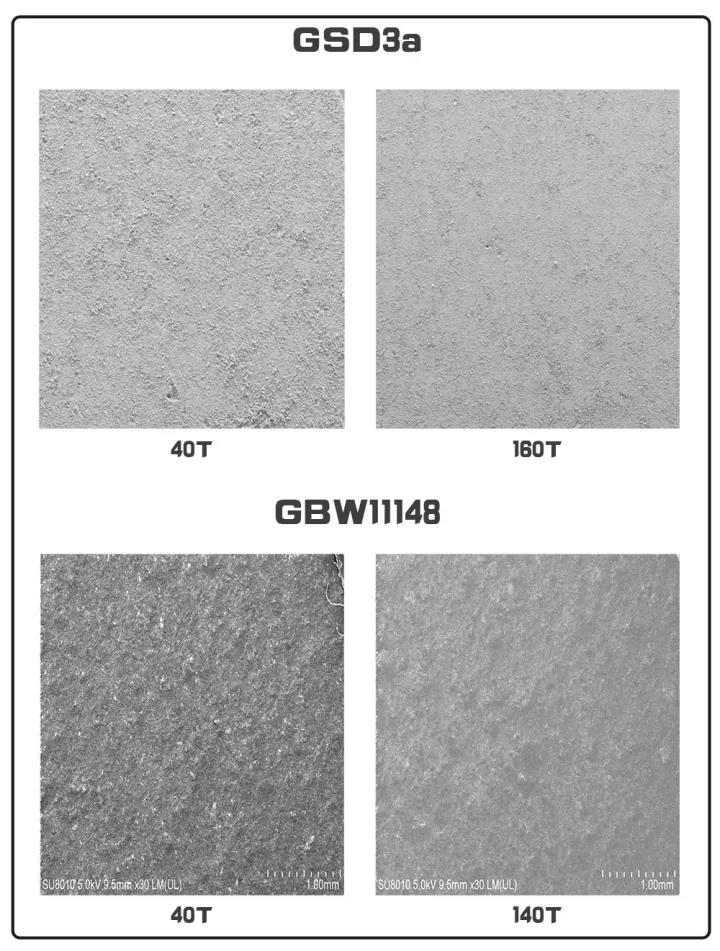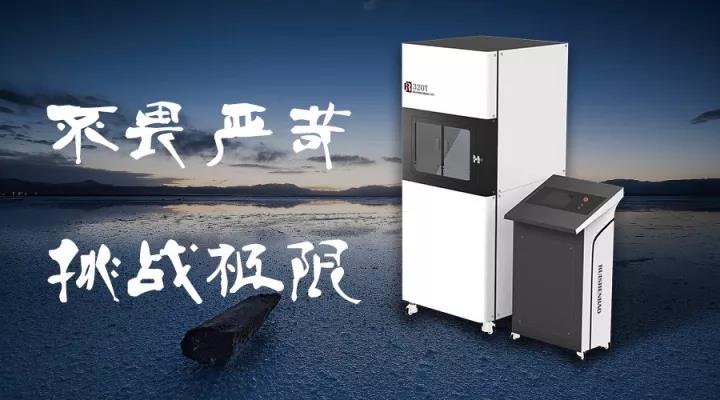Technologies For Innovation
SERVICES
After-sale service
+86 10-57374441
13
12
Advantages of ultra-high pressure sample preparation technology
Ruishenbao Analytical (Tianjin) Co., Ltd
Key word: UHPS, Pellet press, sample preparation,
X-ray fluorescence spectrometry (XRF) has been widely applied in geology, metallurgy, environment, building materials and other fields because of its simple preparation, high precision and multi-element simultaneous determination. The powder pressing method is to put into special molds the powder sample which has been dried or roasted, ground and even mixed, and make a X ray fluorescence analysis specimen with a pellet press at a certain pressure.The sample preparation is simple, rapid and low cost, so it is applied in trace analysis of medium and heavy elements, and in determination of the main, secondary and trace elements of the specimen which are relatively consistent in variety and not high demanding in precision. This method is one of the commonly used sample preparation method for XRF analysis, and especially suitable for analysis of solid powder samples of large quantities.
The traditional low-pressure power sample preparation method (20-40T) is hard to make samples of meeting the determination requirements. The surface of the sample is rough and the power easily falls off, so it is prone to contaminate the sample room of XRF device and affect the subsequent determination. And the sample may be formed by adding binder in, which will decrease the analysis strength line and affect the testing bottom line of light and trace elements. Besides, the sample preparation steps, such as grinding and mixing, increase the sample preparation time, that is not conducive to the rapid analysis of large quantities of samples.

And the new ultra-high pressure sample preparation method, making samples under ultra-high pressure (140-320T), has completely overcome the disadvantages of low pressure preparation specimen and greatly improved the sample preparation effect. Many documents on ultra-high pressure samples have illustrated the comparison in five aspects: surface morphology and density, structure analysis, detection limit, precision and accuracy.
1. Surface morphology and density
In order to check the surface morphology and density of the specimen surface, pictures below of samples under different pressure have been taken by the scanning electronic microscope, and we can know that with the increase of pressure comes the decreasing thickness and the mounting density of the sample. At the same time, the surface brightness is strengthened and the background scattering gets weakened.

2. Structure analysis
By scanning different samples under 40T and 60T pressure with X-ray diffractometer and comparing semi-height of the Silica spectrum peak, it is can be found that the samples under high pressure get wide obviously, indicating the variation of the peak shape happens. It may be caused by the fact that the lattice of silica under high pressure has been damaged, bringing about smaller particle size and more compact sample surface.

3. Detection limit
The detection limits are calculated according to the determination conditions and formulas(1) of each element. [4]
 (1)
(1)
In the formula, m refers to sensitivity; I refers to the count rate of blank samples; t refers to the measurement time of blank samples.
In practical applications, it has been found that the detection limit calculated by the above formula is relatively low. Due to the different composition of the sample, many factors will change, including he sensitivity of the analysis element, the scattering background strength, and the degree of overlapping interference of the spectral lines. Therefore, the results obtained by theoretical formulas can neither represent the detection level of the elements in the actual sample, nor can they reflect the influence of the sample preparation process. In the actual test, the detection limit is determined by the three-fold standard deviation(3S) of the measurement value, the multiple measurements of the actual samples which are low in each element and close to the detection limit. With the comparison of prepared samples in ultra high pressure and low pressure, we can find that the detection limit in ultra high pressure is obviously superior to that in low pressure. [1,2,4]
4. Precision
By comparing the measurement results of the same samples in different pressure but under the same analysis conditions, it is concluded that the counting rate of the samples prepared in high pressure was higher than that in the low pressure. [1] Many documents have illustrated the tests on 18-23 elements of a variety of standard samples, The results show that the relative standard deviations of most components are below 1% except for individual elements, and the reproducibility of sample preparation is good. [1,2,4]
5. Accuracy
By comparing the standard samples of rock and water sediment under 40T and 160T pressure, it is found that the element analysis results of samples prepared under 160T pressure are closer to the standard values of standard samples than those under 40T pressure. [1]
Through the test of biological samples, it is also found that the relative error of the element measurement results of samples under the pressure of 1760MPa is less than 30% , and the reproducibility of sample preparation has been greatly improved. [4]
With the comparison of the determination of coal samples under 140T pressure and the analysis results by multiple ICP determination, the conclusion is that the X-Ray Fluorescence determination values are basically consistent with the chemical values. [2]
Summary:
Ultra-high Pressure Sample Preparation Technology reduces the matrix effect, and eliminates the powder effect. Without binder, all kinds of powder samples can be directly pressed to form. It not only provides a new way of powder sample preparation for X-Ray Fluorescence, but also promotes the development of X-ray Fluorescence spectrum analysis technology, due to the improvement of element sensitivity and the progress of analysis results in precision and accuracy.
In consideration of the current demands, RUISHENBAO analytical technology (Shanghai) Co., Ltd launches UHPS-320T ultra-high pressure system, the newly developed fully automatic high pressure sample preparation system. It can not only be used for the sample preparation of X-ray fluorescence spectrometry, but also for the sample preparation of direct solid sample analysis devices such as X-ray diffractometer (XRD), Optical Emission Spectrometer(OES), laser induced breakdown spectroscopy (LIBS), atomic fluorescence spectrometer (AFS), inductively coupled plasma atomic emission spectrometer (ICP-AES), inductively coupled plasma mass spectrometry (ICP-MS). The solid samples are various, such as iron and metal powder. More details will be published on after another.

[1]张勤,于兆水,李小莉,李国会. X 射线荧光光谱高压制样方法和技术研究[J]. 光谱学与光谱分析, 2013,33( 12) : 3402 - 3407.
[2]李小莉, 安树清, 于兆水,等. 高压制样X-射线荧光光谱法测定煤样品中17种元素和灰分[J]. 分析化学, 2014, 42(2):283-287.
[3]陈岳, 罗武干, 穆青,等. 河北临漳曹村窑址青釉器物工艺特征研究[J]. 岩矿测试, 2013, 32(1):64-69.
[4]于兆水, 陈海杰, 张雪梅,等. 高压粉末制样-偏振能量色散X射线荧光光谱法测定生物样品中24种元素[J]. 理化检验-化学分册, 2015, 51(11):1594-1597.
[5]梁钰. X射线荧光光谱分析基础[M]. 科学出版社, 2007.
+86 10-57374441
+86 136 8188 9743
info@ruishenbao.com
Whatsapp:+86 13681889743
Skype:+86 13681889743
Room1006,No.280,ShangZhongXiLu,Xuhui district,ShangHai,200237,P.R.China

+86 10-57374441
+86 136 8188 9743
info@ruishenbao.com
Whatsapp:+86 13681889743
Skype:+86 13681889743
Room1006,No.280,ShangZhongXiLu,Xuhui district,ShangHai,200237,P.R.China